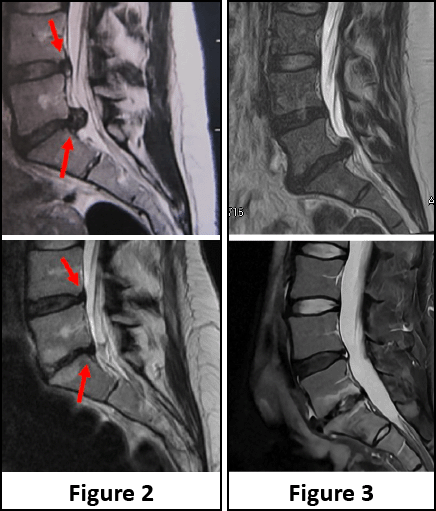Neuroradiologist and interventional radiologist..
- Former intern and chief resident at the Hospitals of Paris,
- Former Professor of Radiology at the University Hospital of Caen,
- Former Professor of Radiology and Neurosurgery at McGill University, Montreal, Canada,
- Former Professor of Radiology and Neurosurgery at the University of Southern,
- Recipient of the Dyke Memorial Award.
More than 200 scientific publications. Main areas of scientific excellence: endovascular treatment of carotid arteries and treatment of disc herniations by percutaneous means.
Back Pain: A Recurrent Problem
Back pain is very common. It is rare for someone to say they have never experienced pain in this area. Although many therapies have been proposed to treat it, there remains, in the public’s mind, a certain dissatisfaction with the results obtained, often incomplete or even worsened by complex, heavy, and costly techniques. Patients are still too often ultimately asked to accept the idea that they will have to suffer for the rest of their lives. Our goal here is to present another way to consider this pathology.
“Global” Method of Non-Surgical Treatment for Spinal Problems
Forty years of experience in diagnostic and interventional radiology have led us to propose more adapted techniques for this problem. Together, they form a new “global method” of diagnosis and treatment based on fundamental points:
Since humans have been standing upright, their spine, particularly the lower lumbar region, has been vulnerable. Generally, the proper functioning of the spine mainly depends on the good energy and “harmony” of the muscles located on either side of the spine (paraspinal muscles). Disc herniations, as well as many other vertebral problems, are often a direct consequence of their dysfunction because they are an essential energy command for the whole body.
2) Spinal pain is most often “regional,” including several discs and adjacent vertebral joints.
3) The therapeutic response best suited to the problem of disc herniations must always be directed towards techniques causing the least possible trauma and respecting as much as possible the anatomy and function of all segments of the spine without introducing any material.
4) Natural medications selected by this clinical method should always be preferred, whenever possible, to chemical substances.
The “global” diagnostic and therapeutic method uses two percutaneous therapies and an original paraspinal muscle harmonization method.
Click on each figure to display the captions
1. Percutaneous Treatments
A) Non-surgical treatment of disc herniations by injection into the disc (figure 1)**
Uses an original substance, which we have described, based on opaque gelified alcohol (“Discogel”)


This substance reduces the volume of the hernia by lowering the hyperpressure of the disc while preserving the anatomy of the spine (figures 2 & 3)
This substance, used for over 20 years without any side effects, can be used in the cervical (figure 4) and thoracic levels.


It can also be used at the lumbar level in disabling low back pain caused by a single disc pathology (figure 5)…
… or several discs in the same session to globally treat the often “regional” nature of the problem (figure 6).


B) Improving the active containment of the spine by an original lumbar liposuction technique. This technique, often used in chronic painful pathologies with muscle atrophy and perimuscular fat deposits, allows for the reinforcement of atrophied paraspinal muscles (figure 7).
2. Paraspinal Muscle Harmonization
We have called it this because the paraspinal muscles are the essential diagnostic and therapeutic reference. The clinical method we have developed will guide the diagnosis and therapy.
a) It allows precise localization of the origin of the problem (figure 8).


b) It enables the selection of percutaneous therapies and natural products beneficial to the patient as well as their dosage (figure 9).
We use classic means (figure 10) of local stimulation (Acupuncture, Ozone) as well as a plethora of natural products (Homeopathy, Phytotherapy, Bach Flowers, Gemmotherapy, Lithotherapy, Sylvotherapy) whose potential list is infinite but which can all be selected for a patient at a given time and in the necessary and sufficient dose.


c) It has also allowed us to adapt and use extraordinarily rich and non-aggressive therapies such as water memory, Scalar waves, and grounding (figure 11).
Where I practice

Hospital Universitario Vithas Arturo Soria
Calle Arturo Soria, 103, 105, 28043 Madrid, Spain
Learn more about my work on my new video
Testimonials
« I suffered from back pain for years. I couldn’t tolerate the medications anymore. Professor Théron’s treatment transformed my life »
André, 65 y/o
« I thought I was condemned to always suffer. Professor Théron’s treatment gave me possibilities I thought were over for me. »
Christine, 82 y/o
« I have always been very athletic, but I had to stop everything because of back pain that I couldn’t get rid of. Thanks to Professor Théron’s treatment, I resumed my sport at the same level, and I am very grateful to him »
Jean, 35 y/o
